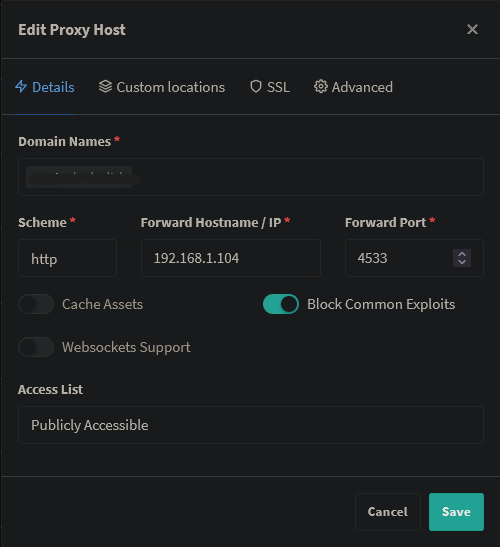-
-
Notifications
You must be signed in to change notification settings - Fork 33
New issue
Have a question about this project? Sign up for a free GitHub account to open an issue and contact its maintainers and the community.
By clicking “Sign up for GitHub”, you agree to our terms of service and privacy statement. We’ll occasionally send you account related emails.
Already on GitHub? Sign in to your account
Docker #52
Comments
|
I'm sorry I discover your app only now. I tried installing it following your docker-compose but it won't work, or I don't have the knowledge to make it work. |
|
I'm going to revisit this as soon as I set up my server differently, but it may be a while. |
|
@tiritibambix If you're interested, could you retry the Docker image? |
|
@ltguillaume Thank you for following up. I tried installing following your instructions and docker-compose. I want this bound to a specific location, so I guess this could work: I had to create The environment variables seem over-complicated for my knowledge. If I take the example of navidrome: here's my stack, on a machine which local address is I just then go to If I want to access it from outside using a domain, I just create a sub domain pointing to my public IP and I just use Nginx Proxy Manager like this: I hope someone more experienced than me will read this and be the middle man as I fear I don't have what it takes to be of more help ':) |
While I'm not opposed to using a bind type volume here (even though Docker discourages it), unfortunately docker doesn't seem to support mounting a bind volume while building an image and I want to put some files in there when building.
There is only a
I'm using nginx-proxy, too, but the docker image supports a standalone way, too, creating SSL certificates automatically. For use behind a reverse proxy, you just need to set the two environment variables a little bit differently ( |

I've dabbled a bit with creating a Docker solution for MFP, which can be found here: https://github.com/ltGuillaume/MusicFolderPlayer/tree/docker
This is pretty much the first time with Docker for me, and I only tried it locally, so I'm gonna need your feedback.
The text was updated successfully, but these errors were encountered: